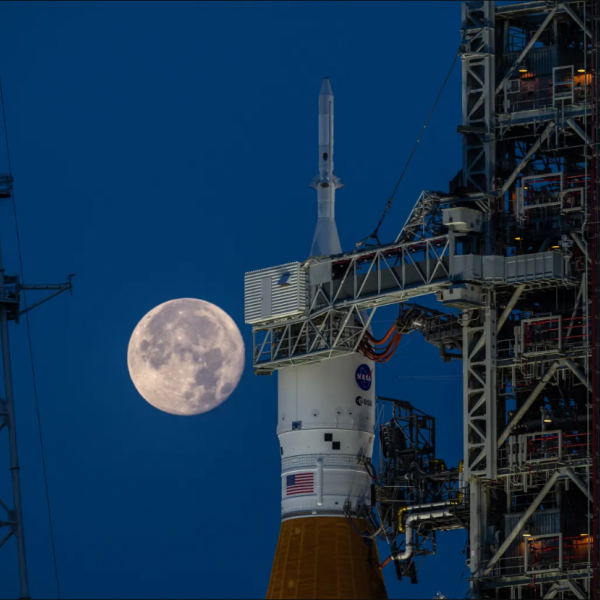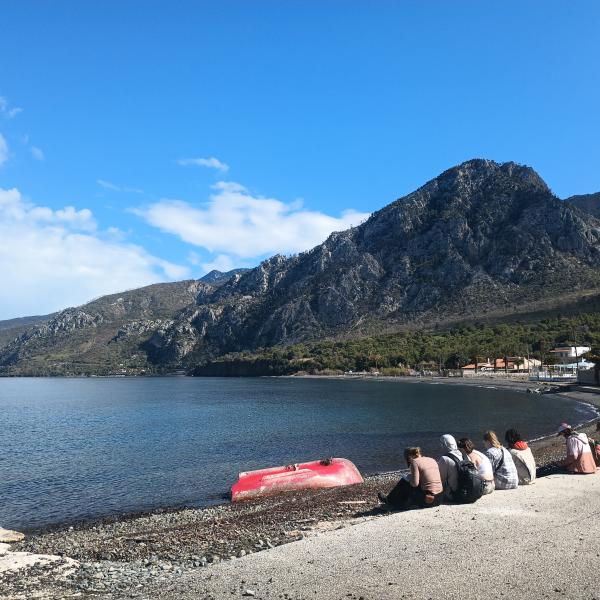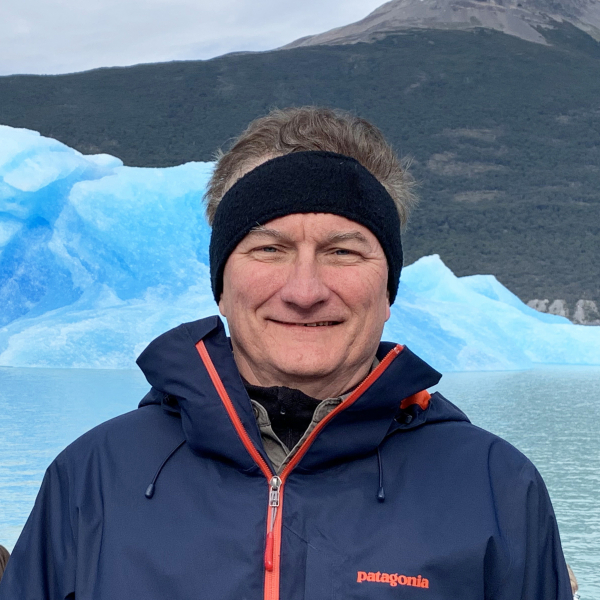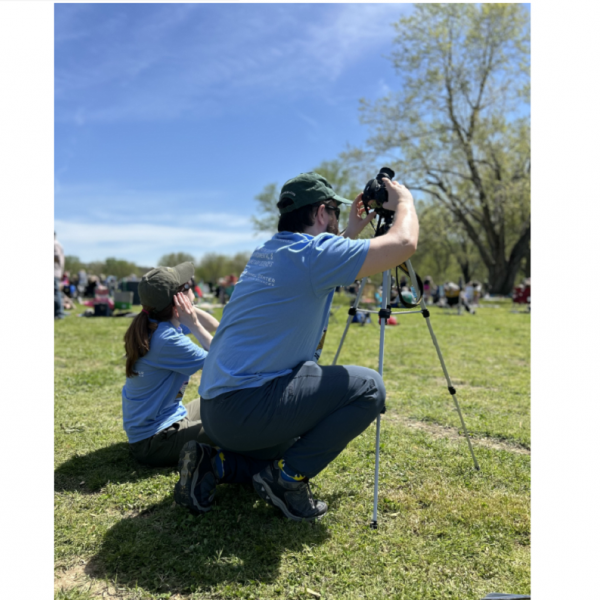NASA recently opened previously untouched lunar samples for a new generation of study. Researchers from the Department of Earth and Planetary Sciences were among those selected to access the pristine Apollo samples.
It should come as no surprise that an outfit with an imagination big enough to take us to the Moon also looked ahead generations into the future. In the early 1970s, NASA’s astronauts gathered sealed samples on the Moon, preserving lunar materials, and brought them back to Earth where they waited for future developments in technology and research methods. 50 years later, their time has come.
In January 2020, Mason Neuman, a graduate student working with assistant professor Kun Wang in the Department of Earth and Planetary Sciences, spent a week at Johnson Space Center (JSC) in Houston, TX, getting a rare look behind the scenes at the United States’ lunar archive. Neuman is part of NASA’s Apollo Next-Generation Sample Analysis (ANGSA) initiative, which seeks new insights into samples gathered decades ago, using the latest analytical tools and methods.
At JSC, Neuman assisted with the preliminary examination of sample 73002. The 18.5-centimeter lunar core sample was brought back by Apollo 17 astronauts in 1972 and remained unopened until November 2019. Now, Neuman and other scientists working on the ANGSA project are carefully processing and cataloguing the sample before it is distributed to ANGSA science teams for analysis.
“My role was to assist the permanent JSC employees who are responsible for the main tasks of dissecting this core,” Neuman said. “Basically, what they’re doing is going in half-centimeter increments, scooping out soil and separating rock fragments, so the core can be separated into sub-samples and later given to people interested in doing research on them. My main responsibility was taking photographs of this entire process while another assistant took notes.”
Meticulous processing and detailed records, including Neuman’s photographs from different angles and under different lighting conditions, ensure that researchers have a complete picture of the sample and its original orientation on the Moon. Neuman noted that these methods have been around in some form since the early days of the Apollo missions. Though processing methods have become more technologically sophisticated in the last 50 years, the essentials of being precise and detail-oriented remain unchanged.
“It’s not a brand-new procedure they’re coming up with. It’s stuff that’s been done before, but it’s been a while,” Neuman said, observing the physical as well as scientific challenges presented by opening new lunar samples. “The core is laid out horizontally on a platform in a stainless-steel glovebox filled with nitrogen gas. Only one person, one of the permanent JSC employees, was allowed to physically interact with and manipulate the core. In the gloveboxes, you stick your arms in thick neoprene gloves and do the work through them. It makes things more complicated because you lose some dexterity, and this is already a very precarious procedure.”
Sticking to a well-defined workflow and carefully sharing space was essential. Though Neuman did not handle the core sample directly, he still described the process as “nerve-wracking,” especially when it came to leaning over the glass-topped glovebox to photograph the sample. “You have to get top-down and angled views, but you don’t want to get in the way of the scientist working on the sample,” he said. “Even when she was out of the glovebox, I had to be careful not to lean too hard on the box or bump into it. Shaking the sample or knocking anything around in there could disrupt the process.”
Once the new samples are fully processed and ready for distribution, Neuman and other researchers working with Wang in WashU’s Isotope Cosmochemistry Laboratory will use mass spectrometry techniques to characterize the core’s elemental composition. Their works fits in with ANGSA’s larger goal of studying volatiles on the Moon, including elements such as hydrogen, oxygen, and simple organic compounds. Other teams at WashU are also interested in studying the effects of space weathering, specifically how those interactions can change the chemical compositions of materials on the surface of the Moon.
“WashU has been participating in the study of the Moon since Apollo in the 1970s,” Wang said. “And now a new generation of WashU scientists and students are prepared and trained for NASA's forthcoming Artemis program.”
The instrumentation available now to do this kind of work — like EPS’s multi-collector inductively coupled plasma mass spectrometer — is incredibly advanced compared to what was available when the lunar samples were first collected. As with older samples, scientists have to be careful about how much material is distributed versus how much is saved and archived. During mass spectrometry testing, for example, the sample is destroyed, but the payoff is a detailed picture of the chemical composition of the Moon.
WashU alumnus Ryan Zeigler, now Apollo Sample Curator and Manager of the Astromaterials Acquisition and Curation Office at JSC, described it as a “balancing act.” “We don’t want to use too much of the sample, but we also have to make sure we’re using enough to get a good science return on the investment.”
Looking ahead, researchers at WashU are figuring out ways to open another sample that currently remains vacuum-sealed, preserving any gases that might have been collected when the core was taken from the Moon. That added element will further complicate sample processing, but it promises exciting new avenues of study for lunar researchers.
The Washington University participation in the ANGSA program is through the Consortium for the Advanced Analysis of Apollo Samples, led by principal investigator Dr. Charles (Chip) Shearer, University of New Mexico, and institutional lead investigator at Washington University, Brad Jolliff, Scott Rudolph Professor of Earth & Planetary Sciences.




